Compared to Apple's products like the iPhone and iPad, Android phones and tablets are very flexible devices. For instance, you can set a new home screen, replace the lock screen, or even beam files using NFC — but that's just the software side of things, and the flexibility goes well beyond that.
Because of a technology called USB On-The-Go (USB OTG), your Android device might even be more powerful than you thought. This allows you to connect other devices to your smartphone or tablet using a $5 adapter that plugs into your charging port, and the possibilities are almost endless. But not all phones support USB OTG, and there's a bit more to learn about the tech, so we'll cover it all below.
What Is USB OTG?
USB OTG is a hardware and software standard that allows you to connect a device to your smartphone or tablet through the USB Type-C or micro USB port. Almost anything that uses a USB connector can be plugged into your Android device with USB OTG, at which point you would be able to control the second device using your smartphone, or vice versa.
Some good example uses for USB OTG include plugging a flash drive into your phone for extra storage, connecting your phone to a DSLR camera to serve as a viewfinder or shutter button, or simply plugging a mouse or keyboard into your tablet to get a desktop-like experience.

To accomplish this, you'll need a special type of adapter called a USB OTG cable. These are available for less than 10 bucks, and they basically have one smaller end that plugs into your phone, with a larger end that you plug the second device into.
However, not all Android devices are compatible with USB OTG. So before you run off and buy a USB OTG adapter, I'll show you how to make sure your phone or tablet supports the standard.
Step 1: Install USB OTG Checker
To find out if your Android device supports USB OTG, start by installing a free app called USB OTG Checker.
- Play Store Link: USB OTG Checker (free)
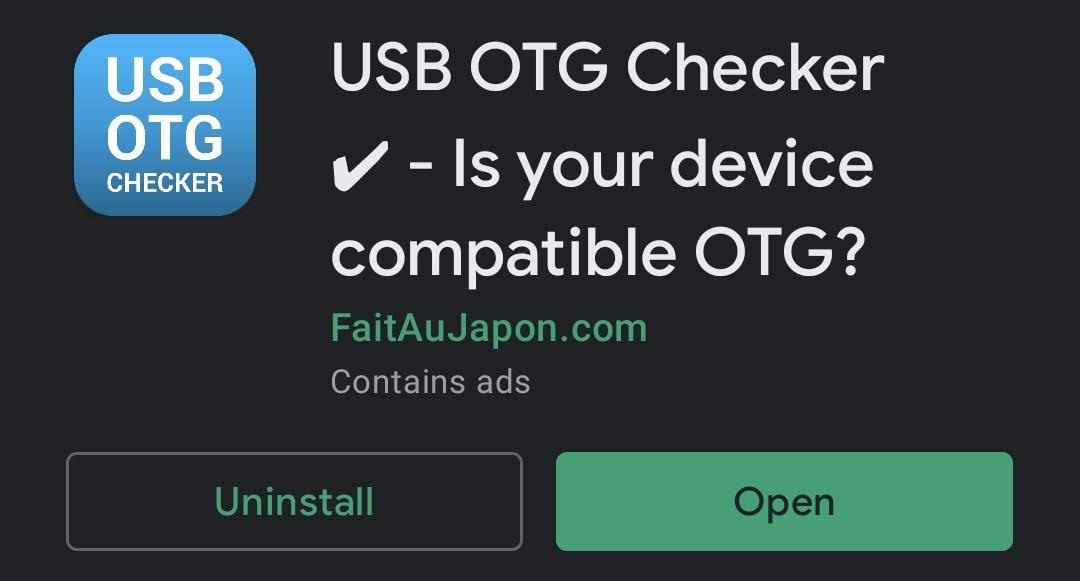
Step 2: See if Your Device Supports USB OTG
Next up, simply launch the app and you'll get an instant readout on your USB OTG status. What you're hoping for here is a message saying "Android compatible USB OTG." Either way, you can learn more about your result by tapping the "Details" button.


Step 3: Purchase an OTG Adapter to Connect Other Devices
Now that you're sure your phone or tablet can take advantage of USB OTG technology, it's a safe bet to go ahead and buy a USB OTG adapter. There are two main types of OTG cables, one is powered and one is not. Most uses will not require an externally-powered USB OTG cable, so a regular OTG cable should fill all of your needs.
OTG Cables (Devices with micro USB Ports)
Here are some regular OTG cables with good reviews on Amazon for devices that have a micro USB port.
- Ugreen USB OTG Cable (currently $4.79)
- Cable Matters USB OTG Cable 2-Pack (currently $6.99)
- C&E USB OTG Cable (currently $4.99)
Powered OTG Cables (Devices with micro USB Ports)
If you'd like to be able to charge your phone while another device is connected to it, you'll need an externally-powered USB OTG cable. This is basically a splitter that connects to three things at the same time: Your Android device, the external device, and a power cable. If you're connecting a device that needs power to function (for instance, a Teensy programmable circuit board), externally-powered is the way to go.
- AtomicMarket Externally-Powered USB OTG Cable (currently $9.99)
- Elipsis 7 Powered USB OTG Cable (currently $3.99)
- Pocketgames Self-Powered USB OTG Dongle (currently $9.98)
OTG Cables (Devices with USB Type-C Ports)
If you own a newer Android device that uses the USB Type-C port, you should make sure to get an OTG adapter that will fit your phone or tablet. Here are some of the best options on Amazon.
- RAVPower USB-C On-The-Go Cable (currently $7.99)
- VicTsing Type-C USB OTG Dongle (currently $6.55)
- Jelly Comb Type-C USB 3.1 OTG Dongle (currently $11.70)
What devices have you connected to your Android phone or tablet using USB OTG? Let us know in the comment section below.
Who needs a wand? Unlock your magical powers and transform yourself from a Muggle into a Wizard or Witch just by using your Android phone. See how:







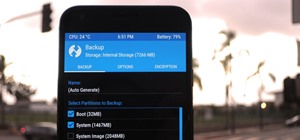
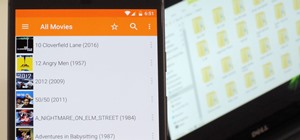
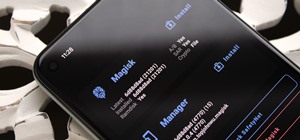
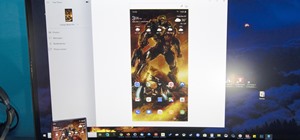



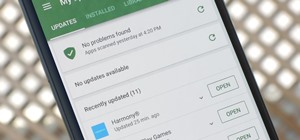


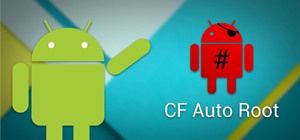
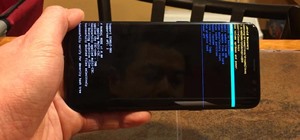
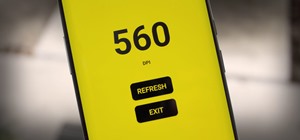
1 Comment
Very informative and comprehensive. I would like to add that the majority of Android powered phones and tablets support OTG USB. The inquiry performed by the OTG Tester app, in most cases, is whether the feature is enabled or not. If your device does not have OTG USB support enabled, and if you have root access of your device, you can edit your build.prop with a build.prop editor or a root fille manager. Add this line to your build.prop:
ro.host_usb=true
Now reboot and hook up your OTG device. If the build.prop edit works, your previously unsupported device will now recognize and host your OTG USB hardware.
Share Your Thoughts